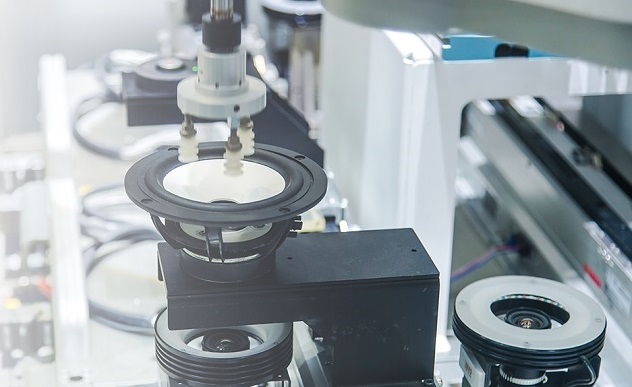Production-Line Test of Audio Devices
 Regardless of any inherent complexities associated with testing a specific audio device (e.g., the importance of fit in headphone measurement), the production line test application presents its own set of unique challenges. These complications can primarily be traced back to one fundamental question posed by manufacturing test engineers around the world: “how do I test products quickly, and for the lowest possible cost, while ensuring no bad products are shipped?”
Regardless of any inherent complexities associated with testing a specific audio device (e.g., the importance of fit in headphone measurement), the production line test application presents its own set of unique challenges. These complications can primarily be traced back to one fundamental question posed by manufacturing test engineers around the world: “how do I test products quickly, and for the lowest possible cost, while ensuring no bad products are shipped?”
Underlying that question are a range of issues, including turn-around time (TAT, or throughput), automation and external control, use of reference units for pass/fail criteria, export of test data for statistical process control (and/or quality standards requirements), multiple device types for a single production line, test process repeatability and consistency, and correlation to testing done in R&D and QC.
If time truly is “money,” then any reduction in the time it takes to achieve an accurate pass/fail result can be achieved for a given device under test (DUT) equates to reduced cost-of-test. Such savings can be achieved in a variety of fashions. Use a logarithmically swept sine signal in lieu of sine wave? Exactly. Or a multichannel test system to test multiple single-channel devices at once? Definitely.
Connected to both throughput and process consistency, automation and external control capabilities are critical evaluation points for any instrument being considered as part of a production line test system. Can its testing capabilities be easily automated? Can it be controlled by an external system? And can it control other systems?
For the production testing of acoustic devices, defining and applying pass/fail limits can also be a challenge, but one that holds the potential for improve system throughput via the prevention of false failures. One approach to establishing such limits is the use of reference (or “golden”) units. As an ideal example of the DUT, such a unit can be processed through each test station and the station’s pass/fail limits created as offsets from the actual measurements of the ideal device.
Another challenge of manufacturing test is the consistency of measurements made on a production line with those made in the development lab, and/or by a quality control (QC) team. While the testing done on the production line may not be as comprehensive as that done in R&D, it is ideal that the same measurements are made, using the same test systems, in all three scenarios. Particularly when there is a manufacturing problem, it can be very time consuming to be troubleshooting a potential manufacturing defect while at the same time trying to solve unrelated discrepancies between measurement systems (possibly produced by different test equipment vendors) used in the lab compared to the manufacturing lines.
Measurement Automation & Production Test with APx
In this Audio Test Session with APx, Joe Begin provides a detailed discussion of how to use a variety of automation and production (or manufacturing) test-oriented features. While these features are valuable for production test, any users that need to conduct the same tests in a repeatable way will likely find them useful.
Topics in this video include:
- Auxiliary Control Input & Output (I/O)
- Pass/Fail Measurement
- Measurement Sequence Steps
- User-defined & APx System Variables
- And more!


